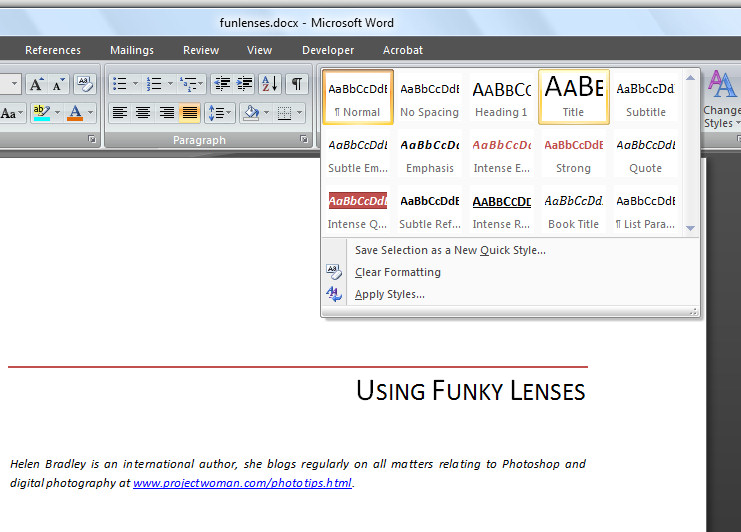
Have questions or feedback about Office VBA or this documentation? Please see Office VBA support and feedback for guidance about the ways you can receive support and provide feedback. Word Object Model Reference Support and feedback They are a quick way to structure a document. For many versions, Word has default Heading styles ‘Heading 1’ ‘Heading 2’ etc.

#Edit heading styles in word how to#
Here’s how to add shortcuts to all Word heading styles not just the three that Microsoft does. If the font for Heading 1 is changed then the font for Heading 2 will also change due to style inheritance. LowerHeadingLevel:=3, UpperHeadingLevel:=1) Word’s in-built Heading styles come with some shortcut keys, but not enough for most people. (Range:=ActiveDocument.Range(0, 0), UseHeadingStyles:=True, _ Example: Following the two step process of copying a good style from the original base file to the normal.dotm file, and then copying it from the normal.dotm file to your. This could effect any heading and appendix style. The following example adds a table of contents at the beginning of the active document and then adds the Title style to the list of styles used to build a table of contents. There is a bug in Microsoft Word’s numbering styles that may cause the style to change to a black rectangular box. Use the Add method to add a style to the HeadingStyles collection. (Range:=ActiveDocument.Range(0, 0), AddedStyles:="Title") The following example adds (at the beginning of the active document) a table of figures built from the Title style, and then displays the name of the first style in the HeadingStyles collection. Click the arrow below the Themes button to make bigger style changes. If you want to incorporate automatic numbering in your document headings, the quickest and most foolproof route is to create a custom style. Document Formatting is a gallery of different types (casual, stylish, numbered). 10 steps to creating a numbered heading style in Word. You can change the Style of your document several ways in the DESIGN tab. The index number represents the position of the style in the HeadingStyles collection. Find a Style you like and quickly adjust the look to make it the way you want.


Use HeadingStyles (Index), where Index is the index number, to return a single HeadingStyle object. These settings are found in the Design tab (introduced into Microsoft Word with version 2013). Fortunately, you can permanently change just two Styles (+Body and +Headings) to give your documents a more businesslike typeface. The HeadingStyle object is a member of the HeadingStyles collection. One of the most persistent frustrations legal users have with Microsoft Word fonts is the default font settings. Represents a style used to build a table of contents or figures.


 0 kommentar(er)
0 kommentar(er)
